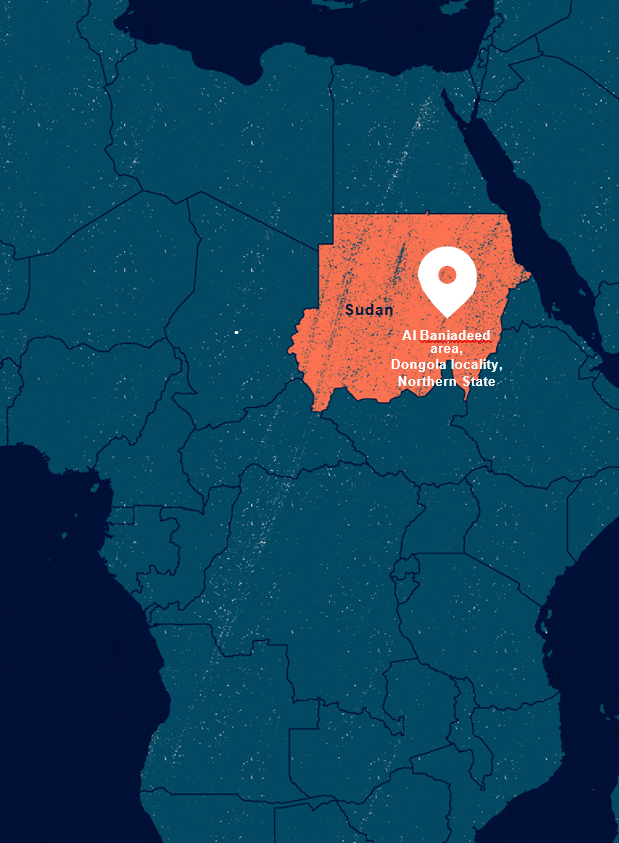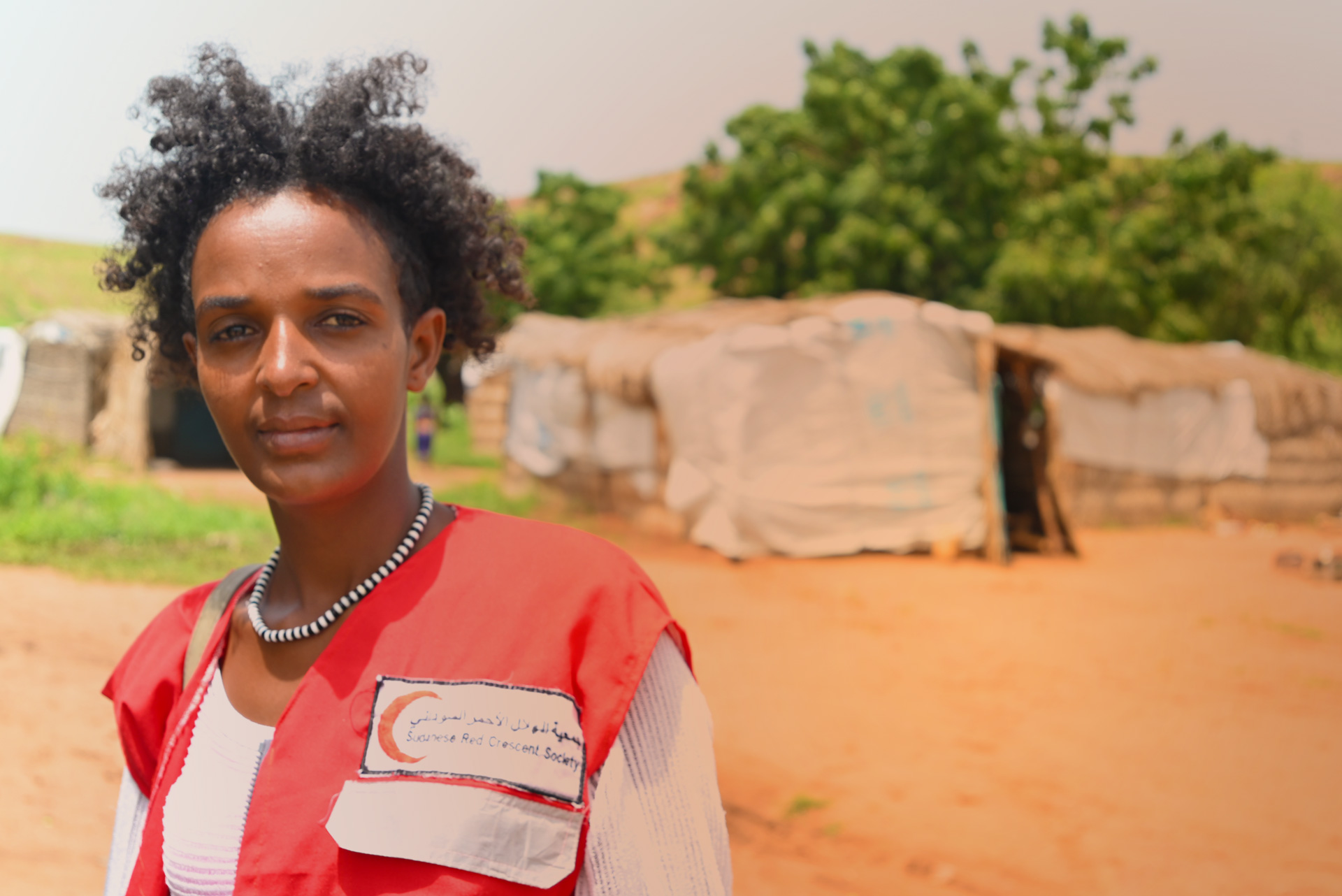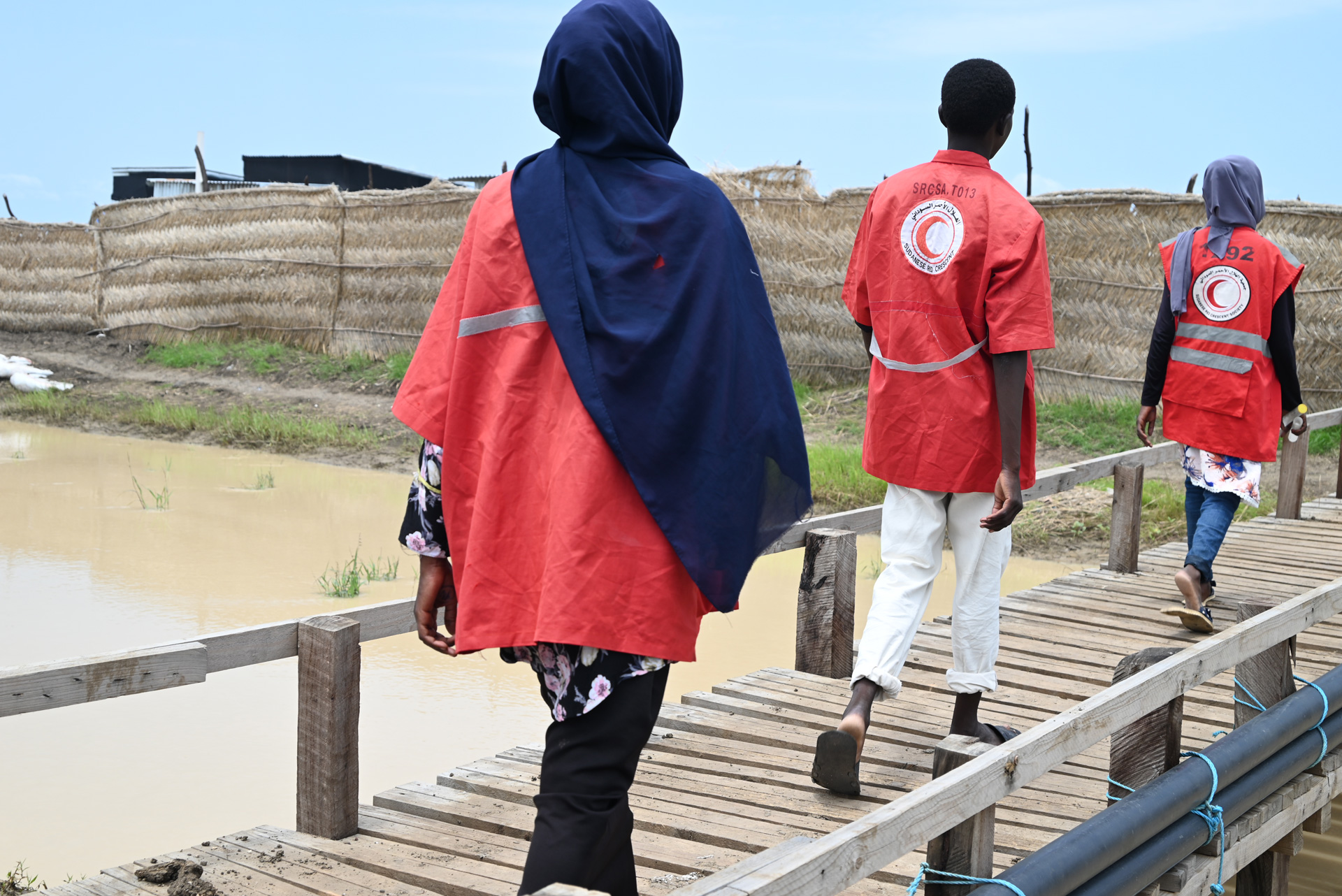HSP Case Study: Sudanese Red Crescent
Sudanese Red Crescent
Fixed Humanitarian Service Point
Dongola, Sudan
2017
- South Sudanese refugees and undocumented migrants
- Internally displaced persons (IDPs) from Nuba Mountain and Darfur
- Host community
- Healthcare (including psychosocial support)
- Restoring family links
- Awareness on safe migration
- Recreational activities and social inclusion events
- Child-friendly space and kindergarten
Sudan lies at a strategic geographic junction between East Africa, the Horn of Africa, Europe and North Africa. It is, at once, an origin, transit and destination country for migrants and displaced persons. Sudan hosts one of the largest refugee populations in Africa. As of June 2022, Sudan hosted 1.14 million refugees and asylum seekers, mostly from South Sudan and Eritrea. Over a third of refugees in Sudan reside in camps, with just under two-thirds in out-of-camp and urban settings. In addition to migration flows, Sudan is facing renewed and protracted internal displacement. As of December 2022, there were around 3.78 million IDPs in Sudan.
The overall humanitarian and development situation remains complex and was further complicated in 2022 by sustained economic decline. Political instability, economic crisis and high inflation have resulted in significant food insecurity. Nearly one in three people across the country are estimated to need humanitarian assistance.
Northern State, where the HSP is located, is no exception. The state borders Libya and Egypt, and is a transit, origin and final destination area for migrants and displaced persons. In the main, this includes undocumented migrants and displaced persons from Eritrea, Ethiopia, Nigeria and South Sudan. An estimated 80 per cent of migrants and displaced persons arriving in the state cross through the Western desert on their onward journey towards Libya and Egypt. Some migrants and displaced persons transit relatively quickly. However, most remain in Northern State for longer periods of time, sometimes several years, as they try to accumulate sufficient resources to continue their journey towards North Africa and Europe. Undocumented migrants and displaced persons in Sudan are often prone to high levels of vulnerability. They are largely cut off from formal economies and particularly vulnerable to the effects of the recent economic decline, heightened food insecurity and resulting protection risks.
In 2017, while the Sudanese Red Crescent and the Danish Red Cross were running a joint migration programme in Sudan, both partners identified a service provision gap that could be filled by creating a place where, as a Sudanese Red Crescent staff member put it, “volunteers can carry out their activities but also that allows migrants to have a free space.” A needs assessment conducted as part of the project helped to confirm the location of migrants and displaced persons, their challenges and gaps in services. Access to healthcare, protection, psychosocial support and social inclusion were highlighted as particular challenges for migrants and displaced persons in Northern State.
Before setting up what was initially called the ‘Community Centre’, the Sudanese Red Crescent discussed potential solutions with the community leaders and with authorities. Establishing an HSP was identified as a good approach and during another meeting, migrants and displaced persons’ leaders indicated the best location. Early discussions with authorities led to memorandums of understanding (MoUs) being developed with both the locality governor and Youth Committee.
“Our MoU with the authorities explains the Movement’s approach and philosophy behind the Humanitarian Service Point and the activities expected to be carried out, and then also what we’re expecting from the authorities in terms
of supporting and facilitating having the Humanitarian Service Point.”Staff member, Sudanese Red Crescent
Before the centre was opened, the Sudanese Red Crescent organized training sessions for volunteers on issues such as the International Red Cross and Red Crescent Movement and its Fundamental Principles, and volunteer roles and activities, as well as specialized training on safe and dignified engagement, protection, gender and inclusion, community engagement and accountability, psychological first aid, first aid and detention.
Over time, the Community Centre was more formally recognized as an HSP – joining six similar points across Northern State – to better reflect the variety of assistance and protection services provided to migrants, displaced persons and the host community. It is a fixed point, located in a building that belongs to the Youth Committee of the Al Banjadeed area of Dongola, the capital of Northern State. The Sudanese Red Crescent decided to implement the HSP at a fixed location since many migrants and displaced persons targeted for assistance had been settled in that area for a long time and required a stable space to access assistance and protection services. The HSP provides pro- tection activities, including services to restore family links, psychosocial support (individual, collective and recreational sessions) and self-protection messages as well as healthcare-related services, including health awareness sessions. It includes a morning kindergarten and other activities for children in a purposefully designed child-friendly space. The Sudanese Red Crescent also organizes social inclusion and recreational events such as traditional coffee and tea ceremonies, music, theatre and sports.
Although most activities are organized at the fixed location, the HSP also includes a mobile element: volunteers carry out home visits during which they address diverse issues. For example, they provide information about healthcare, including COVID-19, and disseminate general prevention and protection messages. The home visits allow volunteers to collect data about potential new needs among migrants and displaced persons in the community.
The HSP is run solely by volunteers, who cover the various roles involved in the overall coordination and administration of the service point, as well as direct service provision and home visits. A guiding principle in all seven Sudanese Red Crescent HSPs is that volunteer teams should include people from migrant and displaced communities themselves. In Al Banjadeed, this was achieved through dialogue with community leaders, who were made aware of the need for volunteers and relevant selection criteria (for example, commitment, motivation and language skills). All community volunteers are trained by the Sudanese Red Crescent before joining the team. The Al Banjadeed HSP volunteer team is made up of Eritrean, Ethiopian, South Sudanese and Sudanese volunteers, who demonstrate high levels of commitment and regularly organize ‘lessons learnt’ sessions to share good practices and draw out recommendations for the future. Volunteers staffing the HSP recently expressed the desire to expand the services offered to include women’s empowerment and income-generating activities, based on the results of focus group discussions and meetings with beneficiaries.
Sudanese Red Crescent staff felt that the HSP had significantly strengthened social cohesion in the local community. In particular, they felt that its work had highlighted challenges faced by migrants and displaced persons to the host community.
In addition, cultural and recreational activities, such as a female volleyball team and music classes bringing together all communities, have fostered understanding and solidarity among migrants, displaced persons and the host population. Demonstrating strengthened relations, in 2022 the host community decided to include Ethiopian, Nubian and South Sudanese representatives in their ‘Service and Change Committee’, the local group in charge of running services for the area, with representatives becoming fully-fledged members of the committee. Following floods that devastated the area, the committee decided to allocate a quarter of its governmental relief allowance to assist migrant and displaced communities.
“This HSP [Humanitarian Service Point] makes very good social inclusion between migrants and the host community. These days, they live in peace, every group accepts the other groups.”
Staff member, Sudanese Red Crescent
In Al Banjadeed, Sudanese Red Crescent staff also felt that the unique International Red Cross and Red Crescent Movement approach to migration helped to distinguish the Sudanese Red Crescent from other humanitarian actors, providing assistance and protection to vulnerable migrants and displaced persons on the basis of humanitarian needs alone, irrespective of migration status.
Staff also highlighted the unique auxiliary role of the Sudanese Red Crescent, which they felt had strengthened their ability to advocate for the rights of migrant and displaced persons towards authorities. It is felt that in Northern State, the Sudanese Red Crescent is reaping the rewards of its advocacy efforts and long-term work in migration, being accepted and trusted by the authorities, local population and, crucially, migrants and displaced persons themselves.
Sudanese Red Crescent insights
“At the beginning, gaining the trust and acceptance of migrants and host communities was a challenge”
Sudanese Red Crescent staff member
The Sudanese Red Crescent highlighted the significance of the initial consultation phase with relevant communities before setting up the HSP. This phase ensured that all communities identified the HSP as a good solution and agreed on the best location. The consultation process was also an opportunity to disseminate information about future services and events, while encouraging communities to attend joint activities. To keep building on and improving all communities’ trust, the Sudanese Red Crescent ensures that the HSP is a ‘dynamic free zone’ where newly arrived and long-established migrants and displaced persons alike have access to ever-adapting services and information. Integrating migrants and displaced persons in the volunteer team was also considered crucial to facilitating trust between the Sudanese Red Crescent and target communities.
“The difficulties to reach new arrivals”
Sudanese Red Crescent staff member
Volunteers at the HSP have faced challenges reaching new arrivals in Northern State to inform them about the services available. This difficulty was resolved by including representatives of migrants and displaced persons in the local ‘Service and Change Committee’. Regular dialogue within the committee ensures that committee members can keep each other mutually updated on new arrivals, drawing on their respective sources of information.



